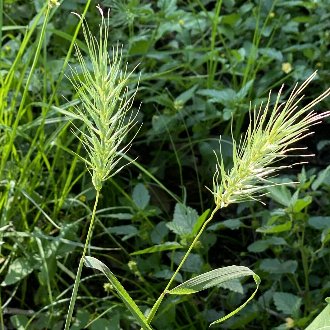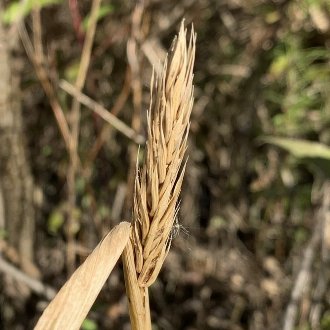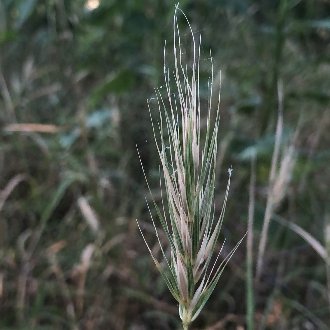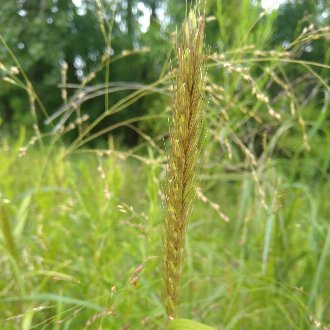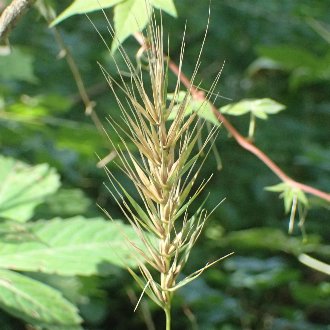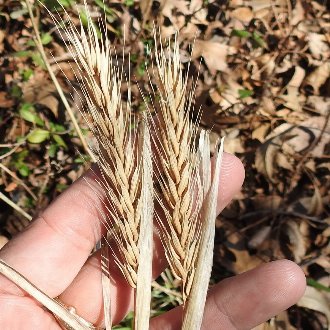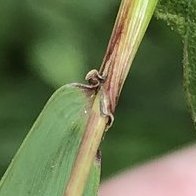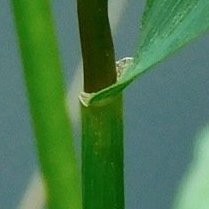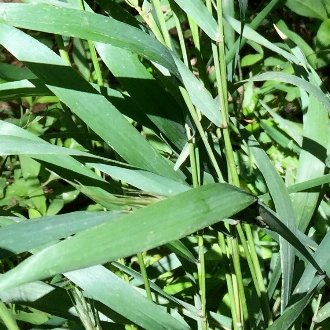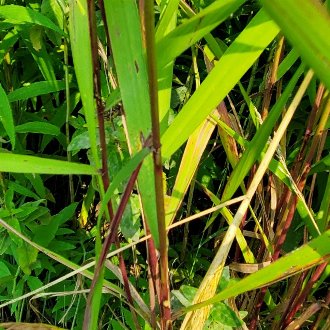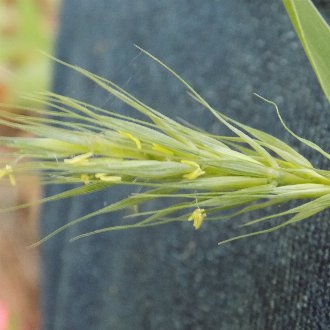Early Wildrye vs Virginia Wildrye
This guide is under construction and has not been published yet. It may have errors. When in doubt, double-check other sources for definitive ID.These species are sometimes confused where their ranges overlap, but are usually easy to tell apart. Both occur in open, moist to mesic forests. Virginia wildrye is much more common, ranges farther west, and can be found on sunnier sites and more acidic soils, whereas early wildrye is more restricted to forests and calcium-rich soils.
Early Wildrye (Elymus macgregorii) | Virginia Wildrye (Elymus virginicus) |
A perennial cool-season bunchgrass native to eastern North America, found in moist-to-mesic forests on deep, calcium-rich soils. | A perennial, cool-season bunchgrass found in moist, sunny to partly-sunny areas, native to almost all but the westernmost parts of North America. |
Awns usually angled more to the sides, leading the spike to appear wider and more spreading. Photo © Gary Rogers, CC BY 4.0. | Awns usually strongly oriented in the direction of the spike, not spreading much to the side, leading the spike to appear narrower and more compact. Photo © Elizabeth Axley, CC BY 4.0. |
Spike consistently short, nearly always at most 12cm long. Photo © Spencer, CC BY 4.0. | Spike can be short, but is often much longer, commonly to 16cm and occasionally to 22cm. Photo © Marilynn Miller, CC BY 4.0. |
Bases of the spike are usually exposed, not enclosed in a leaf blade. Rarely, the base may be enclosed in the uppermost leaf. Photo © Yann Kemper, Public Domain. | Bases of the spike are usually enclosed in the base of the uppermost leaf blade, even late in the season when the plant is completely dried out, except on var jejunus or var halophilus, where it is exposed but still relatively close to the uppermost leaf. Photo © Sam Kieschnick, CC BY 4.0. |
Auricles (clasping outgrowths where the leaf blade meets the stem) are always present, larger (2-3 mm), and are usually very dark purple, almost black. Photo © akt2, CC BY 4.0. | Auricles may be absent, and when present are smaller (1.8mm or shorter), less conspicuous, and pale brown in color. Photo © mjpapay, CC BY 4.0. |
Foliage usually glaucous (pale and slightly bluish). Sheaths are nearly always a similar color as most of the rest of the foliage, rarely or never purplish or reddish outside the auricles. Photo © Ken Kneidel, Public Domain. | Foliage may be glaucous but less likely to be so;. Sheaths (parts of leaves enclosing the same are occasionally purplish or reddish. Photo © Alexandra Destria, CC BY 4.0. |
Blooms nearly a month earlier on average, mid-May to mid-June in most of the range. (Photo from May 11 in Texas) Photo © Blake Bringhurst, CC BY 4.0. | Blooms nearly a month later, sometimes much later, mid-June to late July in most of the range, occasionally into mid-August. |
References & External Resources
These short lists show only links helpful for ID. For a complete list of references and resources also covering other aspects of ecology, visit the links section of the full article on each plant, which is the first entry here.



